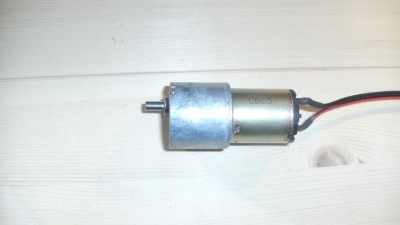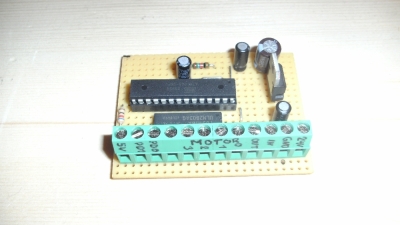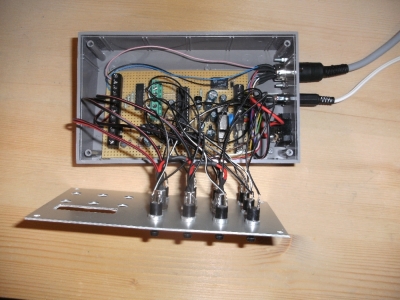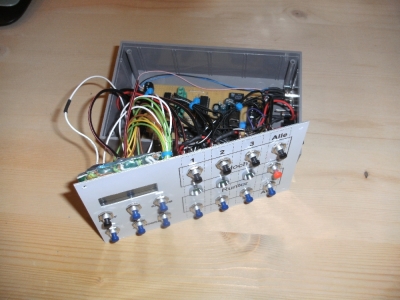
Who doesn't know that: you wake up in the morning and must open your drapes or roller blinds so that light comes into the room. Day by day. I was disturbed of this fact anyway. In my opinion you should automate those annoying things. The best thing would be, when roller blinds automatically rise at a certain time, so that it is easier to stand up from bed. And in the evening it would be great if they go down automatically.
Table of contents
How did I proceed?
First of all, I bought roller blinds (indoor) and then I planned the rest.
I decided to use unipolar stepper motors as drive units, but afterwards I knew, that this was a bad decision. Here you can see the stepper motor:
The bip problem was, that I overestimated the torque of the stepper motors and then finally I had to realize that the motors didn't have enough power to pull up the roller blinds. To solve this problem, I disassembled another gear motor and built a gear for the stepper motors.
Of course, more powerful motors would have been much better, but unfortunately these are often quite expensive.
Light barriers
That the controller knows when the blind is very top or bottom, of course I needed light barriers (one could do it also with reed contacts or anything else). For this, I produced two plates facing each other (of course, the roller blind is in between). On one side IR light will be emitted and on the other side is a photodiode, which resistance is small when IR light is absorbed. The upper light barrier is to stop the downward motion (in the roller blind is a small hole at a certain position) and the lower one is to stop the upward motion.
Control boards
Principle realization
I needed three roller blinds with a motor, etc. and a central control because there are three windows in my room. My plan: For each roller blind I build one control, which is responsible for controlling the stepper motor and its switch-off at the end stop. The central control then will just send a signal to the roller blinds (up or down) and they have to operate independently.
Circuit board: "roller blind control"
This circuit board was produced in triplicate and attached directly to the roller blinds. It is responsible for controlling the stepper motor and its switch-off at the end stop.
Here you can download the circuit diagram in PDF format: Ciruit diagram: roller blind control
Here you can download the C-code for the microcontroller: Program: roller blind control [German]
I also created a program flowchart: Program flowchart: roller blind control [German]
First I created the circuit on the PC and then I soldered it on breadboard:
Circuit board: "roller blind control center"
The central control is responsible for analyzing the signals of the switches and the clock timer and then it controls the individual roller blinds. For the central control, I decided to disassemble a weekly clock timer and then connect it to a microcontroller.
Here you can download the circuit diagram in PDF format: Circuit diagram: roller blind control central [German]
Here you can download the C-code for the microcontroller: Program: roller blind control central [German]
The entire circuit part above the ULN2803A is a part of the timer, which I have "outsourced" to the breadboard. I also created this circuit on the PC and soldered it on breadboard:
On the following pictures you can see the display and the rest of the electronics of the weekly clock timer:
Of course, I also planned with the case that there is a problem with a roller blind. So the central control switches off the complete power supply to the individual roller blinds approximately 30 - 40 seconds after pressing a button (or by the timer).
Final roller blind control
Roller blind
For a few weeks the circuit was an "open-air wiring", which had some bad effects: line dissolves → touches a wrong thing → short circuit.
Someday, I managed to build a cover for the roller blinds:
Control center
The central control board I built into a casing, which front panel was also designed by myself.
At the side, there is another switch to switch on and off the entire control system.
Finally, I can only say that this roller blind control makes a great job for a few years.





























